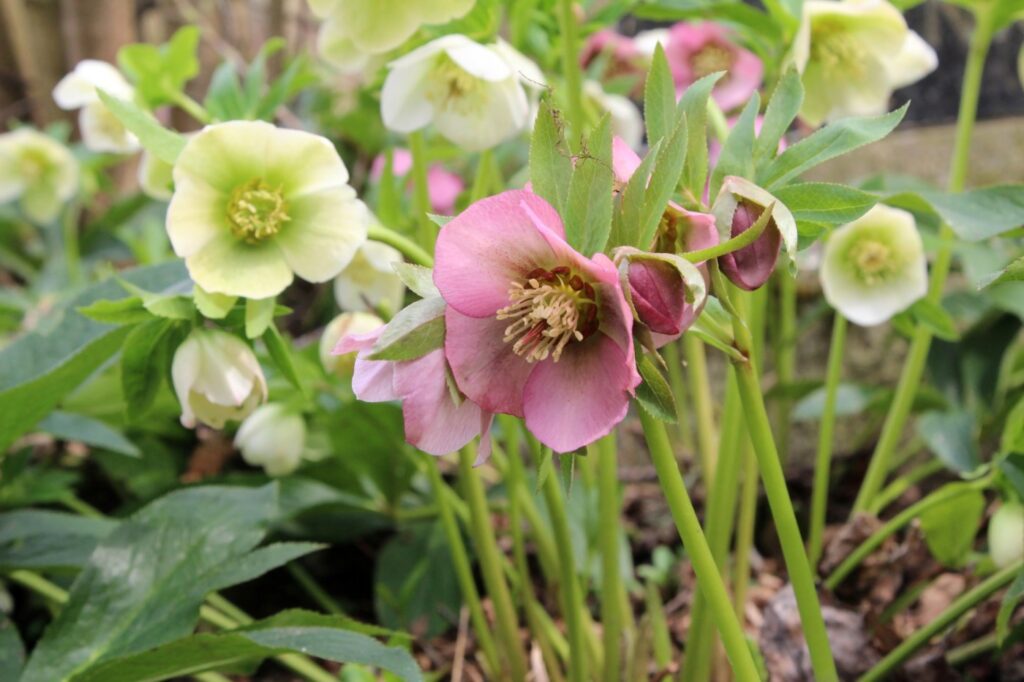
Five things to do in the garden this week:
1. When growing plants in containers, it is preferable to use liquid fertilizer, fertilizer that dissolves in water (e.g. MiracleGro), or slow release fertilizer as opposed to fast-acting conventional fertilizers since they are prone to burn plant roots. This is especially true where young plants are concerned. In fact, Heirloom Roses (heirloomroses.com) warranties their plants for one year on condition that, if grown in containers, they are fertilized exclusively with liquid fertilizer. Potting mixes with conventional fertilizer included are also not advised. It is worth nothing that the roses grown by this company are propagated exclusively from cuttings; none of their roses are grafted. There is some evidence that roses grown on their own roots (from cuttings) are healthier than grafted roses. It is definitely true that grafted roses are more prone to suckering than roses grown from cuttings.
2. Plant hellebores now. The distinctive chalice-shaped flowers of hellebore were invariably greenish in color at one time, but hybrids now bloom in yellow, pink, red, purple, and burgundy, too. They grow from rhizomes that are somewhat delicate so you should not divide the clumps until plants have been in the ground for at least five years. Foliage is an attractive bluish green. You will want to make sure your soil drains well before planting hellebores, also known as Lenten roses, and keep them in partial sun to shady exposures.
3. Stark Brothers is a mail order fruit tree nursery with varieties for every Southern California location. Speaking of figs, for example, they offer brown turkey, Celeste, and Chicago Hardy in their collection of cold tolerant cultivars. Figs are probably the easiest fruit trees to propagate. Detach a woody stem that is 8-12 inches in length, put the bottom inch or two in fast draining potting soil, and you will have a rooted young tree ready to plant out in the garden by next spring.
4. Collect seeds from your vegetable crops now. Make sure seeds are thoroughly dry before storage. They should be stored in paper envelopes or bags as opposed to plastic bags or containers. Seeds need to “breathe” and being in airtight plastic could cause them to rot if the least bit of moisture gets in.
5. Sweet peas (Lathyrus odoratus) are a must in the spring garden and now is when you want to plant them. Their heady fragrance will keep you planting them year after year, especially since they yield abundant seeds that will perpetuate their presence in your garden. Keep in mind that sweet peas are toxic so you want to keep kids at a safe distance from the plants.
Related Articles
This California couple bought a cheap home in Italy. Then they bought another
How to create scary Halloween costumes and decorations from secondhand stores
What to know about some of my favorite trees in the garden
Adventures in gardening: Falling figs, troubled tomatoes and compost volunteers
This week is a good time to be planting vegetables in the garden
